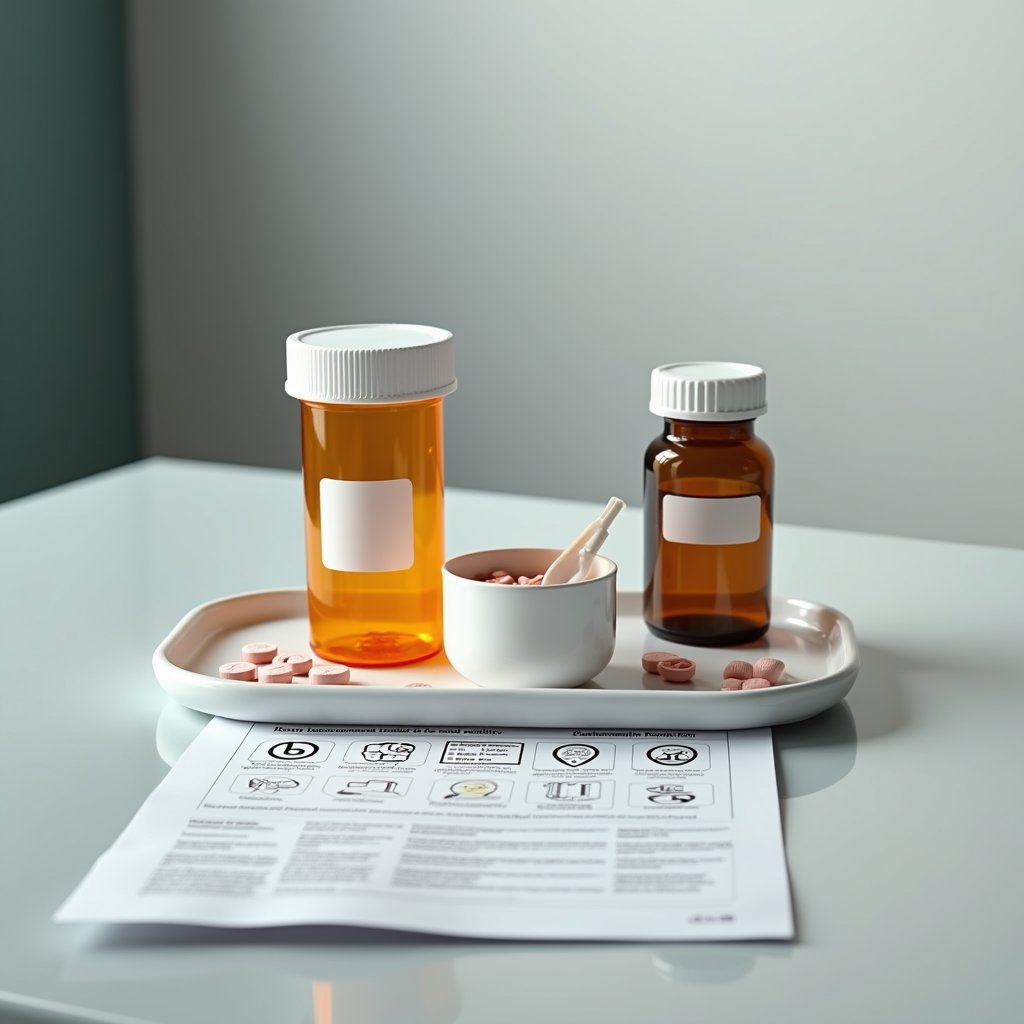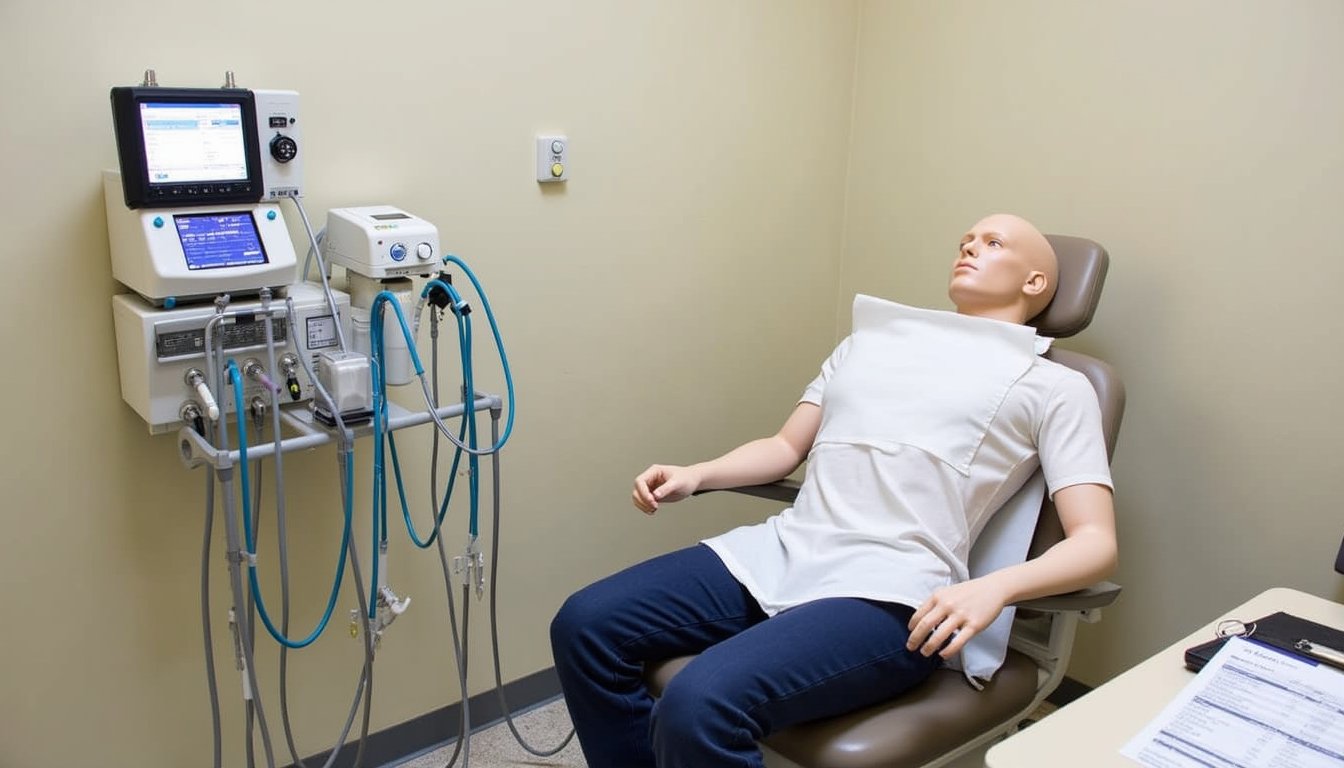Neither Suboxone nor methadone is universally “better” your ideal choice depends on your specific needs. Suboxone offers greater flexibility with take-home doses and lower overdose risk due to its ceiling effect, while methadone provides stronger stabilization through daily supervised dosing, particularly for severe dependence. You’ll find Suboxone costs slightly less annually ($5,980 vs. $6,552) and offers easier access through telemedicine options. Your unique circumstances, including treatment goals and lifestyle requirements, will guide the most effective choice for your recovery path.
Understanding Key Differences Between Suboxone and Methadone

Several fundamental differences distinguish Suboxone and Methadone as medication-assisted treatments for opioid dependence. Methadone acts as a full opioid agonist requiring daily clinic visits under strict regulatory requirements, while Suboxone combines a partial agonist (buprenorphine) with an antagonist (naloxone) that you can take at home. When initiating treatment, patients must wait 12-24 hours after their last opioid use before starting Suboxone to prevent withdrawal complications.
The medications differ remarkably in their prescriber expertise requirements. Methadone must be dispensed through federally regulated OTP programs with specialized training, whereas Suboxone can be prescribed by primary care providers after completing shorter certification programs. You’ll find Suboxone offers greater flexibility with its take-home dosing and wider availability through local providers. Both medications effectively reduce withdrawal symptoms and help patients manage their recovery process. German scientists developed during World War II as a response to morphine shortages.
However, Methadone’s full agonist properties may provide better stabilization for some patients, despite requiring more intensive monitoring and stricter protocols.
Treatment Effectiveness and Success Rates

Beyond their structural differences, clinical evidence demonstrates comparable effectiveness between Suboxone and methadone in treating opioid dependence. Both medications show equivalent efficacy in reducing illicit opioid use, though retention rates tend to favor methadone due to its structured daily dosing.
You’ll find methadone particularly effective if you’re dealing with severe dependence, as its full agonist properties better manage intense withdrawal symptoms. However, if you’re stable and prefer flexibility, Suboxone’s home-based administration might better suit your needs, despite slightly lower treatment adherence rates. The inclusion of naloxone as antagonist helps prevent misuse while maintaining treatment effectiveness.
Research shows that success with either medication depends heavily on consistent long-term use combined with behavioral therapy. While methadone demonstrates 1.5 times lower discontinuation risk, Suboxone’s safer profile and convenience make it a similarly viable option for many patients.
Safety Profiles and Risk Assessment

When examining safety profiles, Suboxone demonstrates notable advantages over methadone due to its built-in ceiling effect and partial agonist properties. You’ll find Suboxone carries a lower overdose risk factor, with its buprenorphine component limiting respiratory depression. While methadone reduces overdose mortality by 59% compared to no treatment, it presents higher inherent risks due to its full opioid agonist properties. Take-home doses are more readily available with Suboxone, making it a safer option for individuals who cannot make daily clinic visits. The stigma and myths about these medications being “just another opioid” have caused many to overlook their proven overdose prevention capabilities. Dopamine release with Suboxone is significantly lower at 25% compared to other opioids, contributing to its improved safety profile.
| Safety Factor | Suboxone | Methadone |
|---|---|---|
| Overdose Risk | Lower – ceiling effect | Higher – no ceiling |
| Drug Interactions | Moderate risk | High risk |
| Respiratory Depression | Limited | More pronounced |
| Safety Margin | Wider | Narrower |
Medication interactions require careful monitoring with both treatments, but methadone’s profile demands stricter oversight due to its potential QT prolongation and interactions with benzodiazepines. You’ll need more frequent clinical monitoring with methadone, especially during the initial dosing period.
Medication Administration Methods
The administration methods for Suboxone and methadone reflect their distinct pharmacological properties and treatment approaches. Suboxone comes in sublingual films or tablets that you’ll place under your tongue until they dissolve, while methadone is typically dispensed as an oral liquid at specialized clinics.
You’ll find that the prescription forms and storage requirements differ considerably between these medications. With Suboxone, you’ll receive a prescription for at-home use, allowing adaptable dosing under your doctor’s supervision. In contrast, methadone requires daily clinic visits initially, where you’ll take your dose under direct observation. As you progress in your recovery, you may earn take-home methadone privileges.
The medications’ formulations are designed for specific purposes – Suboxone includes naloxone to prevent misuse, while methadone’s liquid form maintains consistent dosing under clinical supervision.
Cost Comparison and Insurance Coverage
When comparing Suboxone and methadone costs, you’ll find that methadone averages $6,552 annually while Suboxone runs about $5,980 per year, with coverage varying considerably across insurance plans. Your out-of-pocket expenses will depend on your insurance provider’s specific benefits, as Medicaid and many commercial plans offer coverage for both medications but with different copay structures. Many facilities offer financial aid options and payment plans to help make treatment more accessible. Both medications now come in generic formulations which can help make treatment more affordable for patients without comprehensive insurance coverage. For cost-conscious patients, methadone may be the more economical choice since 100 units cost approximately $16.88.
While pharmacy-dispensed Suboxone might seem more expensive per dose ($115-$257) compared to clinic-administered methadone ($84), the reduced frequency of clinic visits with Suboxone can offset these costs over time.
Coverage Across Insurance Plans
Understanding insurance coverage for Medication for Opioid Use Disorder (MOUD) reveals significant differences between Suboxone and methadone accessibility. You’ll find Suboxone widely covered by major private insurers, with approximately 60% of prescriptions paid through private insurance plans. Provider reimbursement rates tend to be higher for Suboxone, though patient cost sharing requirements vary by plan. Major insurers like Aetna and TRICARE provide comprehensive coverage options for eligible patients.
Methadone coverage is more complex due to its OTP requirement. While Medicaid includes both medications as essential health benefits, you’ll encounter more barriers with methadone coverage. Private insurers often require prior authorization, and availability depends heavily on state OTP partnerships. The new SAMHSA manual includes updated federal guidelines for OTPs that may influence future insurance coverage decisions.
The elimination of buprenorphine prescribing waivers in 2023 has improved Suboxone’s insurance accessibility, while methadone’s strict OTP regulations continue to limit coverage options.
Monthly Out-of-Pocket Expenses
Monthly expenses for opioid treatment medications differ substantially between Suboxone and methadone, with costs shaped by both medication prices and required clinical services.
Monthly expenses for opioid treatment medications differ substantially between Suboxone and methadone, with costs shaped by both medication prices and required clinical services.
Methadone’s monthly clinic-based treatment averages $540, including daily visits and supervision, while Suboxone typically runs about $480 monthly with semiweekly visits. When developing your financial planning strategies, consider that methadone’s standalone medication cost ($84/dose) appears lower than Suboxone ($257-384/dose), but clinic requirements greatly impact total expenses. Effective budgeting techniques should account for transportation costs, as methadone requires more frequent visits. Your out-of-pocket expenses may vary based on insurance coverage Medicaid often covers both treatments, while commercial insurance plans differ in their coverage levels. Without insurance, sliding fee scales and assistance programs can help manage costs. Studies show that only 12.2 percent of individuals who needed substance use treatment in 2019 received specialty care, primarily due to cost barriers.
Pharmacy Vs Clinic Costs
The cost structures between pharmacy-based Suboxone and clinic-based methadone present distinct financial contemplations for patients seeking medication-assisted treatment.
While methadone costs just $0.17 per 10mg tablet at pharmacies, you’ll need to factor in mandatory daily clinic visits at approximately $126/week, which includes counseling and monitoring. Suboxone, though having greater per-dose costs ($2-$4), requires less frequent clinic visits at about $115/week.
Your insurance coverage options differ considerably Medicaid coverage limitations often require OTP certification for methadone, while Suboxone prescriptions face fewer restrictions. Multiple financial assistance programs can help offset expenses through sliding scale fees, grants, and patient assistance initiatives.
When calculating total treatment costs, you’ll need to contemplate both medication pricing and clinic fees, as pharmacy-only costs exclude essential monitoring services.
Patient Eligibility and Treatment Matching
While recent regulatory changes have expanded access to medication-assisted treatment (MAT), determining patient eligibility for Suboxone versus methadone requires careful clinical assessment and individualized treatment matching.
Your treatment path will depend on thorough evaluations that inform interdisciplinary care planning and dosage adjustments. Within 14 days of admission, you’ll undergo both medical and psychosocial assessments to determine the most appropriate medication option.
Methadone may be preferred if you require more structured supervision, have severe opioid dependence, or need daily clinic visits. Suboxone might be better if you’re clinically stable, can manage take-home doses, or need treatment flexibility through telemedicine. Both options require ongoing monitoring of stability indicators, including substance use patterns, behavioral risks, and health status.
Side Effects and Long-term Health Impact
Both Suboxone and methadone carry distinct side effect profiles and long-term health implications that you’ll need to carefully consider with your healthcare provider.
Common side effects you might experience with either medication include headache, nausea, vomiting, and weakness. While both medications can affect dental health impacts through mouth numbness and dry mouth, methadone typically presents more significant dental concerns long-term. Schedule II medication designation requires methadone to be dispensed only at registered clinics. Suboxone comes as a sublingual film that dissolves under the tongue.
You’ll find that methadone carries a higher risk of QT prolongation, affecting heart rhythm, while Suboxone includes naloxone to prevent injection abuse. Comprehensive addiction treatment with counseling and education often leads to the best outcomes.
The psychological withdrawal effects differ between treatments. Methadone’s full agonist properties may lead to stronger dependency, while Suboxone’s partial agonist nature often results in less severe withdrawal symptoms. Both medications require careful long-term management and regular monitoring for liver function and other systemic effects.
Accessibility and Treatment Locations
You’ll find striking differences in how and where you can access Suboxone versus methadone treatments, with methadone requiring daily visits to federally certified Opioid Treatment Programs while Suboxone offers more flexible outpatient options.
Regional disparities greatly impact your treatment choices, as methadone clinics concentrate in urban areas while rural regions often lack adequate coverage for either medication.
Your access to these treatments may be further complicated by pharmacy availability, with approximately 40% of major pharmacy chains declining to stock Suboxone and methadone distribution restricted exclusively to certified treatment centers.
Treatment Location Differences
The accessibility and treatment locations for Suboxone and Methadone differ markedly in their delivery models and geographic reach. Methadone’s daily dosing requirements necessitate specialized clinics, largely in urban areas, creating significant patient transportation challenges. In contrast, Suboxone offers greater flexibility through authorized practitioners nationwide, including primary care providers and telehealth options in select states.
Methadone clinics provide structured, extensive care but require daily visits, limiting access for patients in rural areas or those lacking reliable transportation.
Suboxone’s prescription model enables treatment through local healthcare providers and remote options, eliminating frequent clinic visits.
Treatment location impacts directly correlate with patient compliance and outcomes, particularly for those in remote areas or with limited mobility.
This stark contrast in treatment delivery models greatly influences patient access and treatment success rates.
Access Barriers By Region
Regional disparities in accessing medication-assisted treatment create substantial hurdles for patients seeking recovery from opioid use disorder. You’ll find that only 14.6% of individuals with substance use disorders received treatment in 2023, with rural areas facing significant gaps in both buprenorphine prescribers and methadone clinic availability.
Regulatory restrictions particularly impact rural communities, where licensing requirements for methadone clinics limit provider numbers. Furthermore, occupational limitations affect patients across regions, as federal regulations block methadone and buprenorphine use for truck drivers, pilots, and safety-sensitive positions.
While Medicare coverage has improved, especially for beneficiaries under 65, elderly patients still experience lower medication access rates. The situation’s even more challenging in areas where major pharmacies decline to stock these medications, affecting about 40% of locations nationwide.
Recovery Support and Monitoring Requirements
Monitoring requirements differ markedly between Suboxone and Methadone treatment protocols, with each medication necessitating distinct levels of oversight and patient compliance. Treatment adherence requirements for Methadone involve daily clinic visits and supervised dosing at certified OTP facilities, while Suboxone offers more flexibility through self-administered home dosing. Treatment disruption challenges are substantially higher with Methadone due to rigid scheduling demands.
You’ll face stricter monitoring with Methadone, including mandatory daily visits, regular drug screenings, and supervised consumption.
You’re granted more autonomy with Suboxone through take-home doses, but you’ll still need consistent check-ins and pharmacy coordination.
Your support system varies profoundly Methadone programs mandate counseling and behavioral therapy, while Suboxone typically offers voluntary therapeutic support with less structured oversight.
Frequently Asked Questions
Can Pregnant Women Safely Use Suboxone or Methadone During Their Pregnancy?
Yes, you can safely use either Suboxone or methadone during pregnancy under proper medical supervision. Both medications are approved for managing opioid use disorder while protecting fetal development.
Your healthcare provider will monitor maternal health considerations throughout pregnancy, adjusting dosages as needed. While both options are safe, recent studies show buprenorphine (Suboxone) may lead to milder neonatal withdrawal symptoms. Regular monitoring and consistent prenatal care are essential for ideal outcomes.
How Do These Medications Interact With Antidepressants or Anxiety Medications?
Both methadone and Suboxone can have potential drug interactions with antidepressants and anxiety medications. You’ll need careful monitoring if you’re taking SSRIs or SNRIs with methadone due to serotonin syndrome risks and possible QT prolongation.
Suboxone typically has fewer direct antidepressant interactions, but it’s imperative to avoid benzodiazepines due to dangerous respiratory depression risks.
Always inform your healthcare provider about all medications, as they may need to make medication dosage adjustments.
What Happens if I Need Emergency Surgery While on These Treatments?
When you need emergency surgery while on Suboxone or methadone, you’ll need to inform your surgical team immediately about your medication. They’ll work with your treatment provider to manage dosage adjustments during surgery.
You can safely receive emergency care, but your pain management might need modification. Your doctors may use different anesthesia protocols or higher doses of pain medication to guarantee effective pain control while maintaining your treatment stability.
Can I Travel Internationally While Taking Suboxone or Methadone?
Yes, you can travel internationally while on either medication, but you’ll need proper documentation. Always carry your valid prescription and a doctor’s letter.
Suboxone typically offers more flexibility with take-home doses, while methadone requires advance coordination with clinics abroad. Be aware that international regulations vary markedly some countries ban these medications entirely.
Research your destination’s specific rules and arrange guest dosing if needed well before your trip.
How Do These Treatments Affect Fertility and Hormone Levels Long-Term?
You’ll find that both medications can affect your hormonal balance, though buprenorphine’s partial agonist properties may cause less disruption than methadone’s full agonist effects.
Long-term fertility impact isn’t fully understood, but research suggests methadone might suppress your hypothalamic-pituitary-gonadal axis more considerably. Buprenorphine may better preserve your natural hormone rhythms, though direct fertility comparison studies are limited.
If you’re concerned about fertility, discuss this with your healthcare provider for personalized guidance.
















